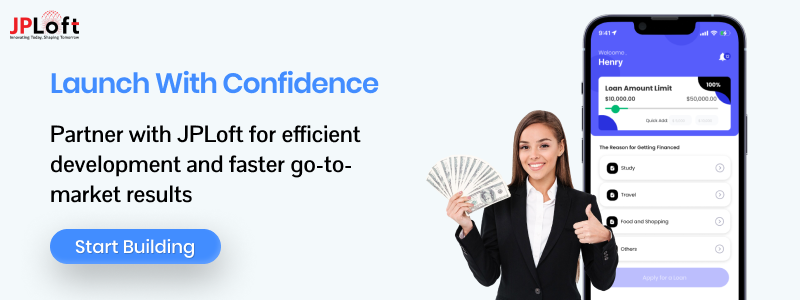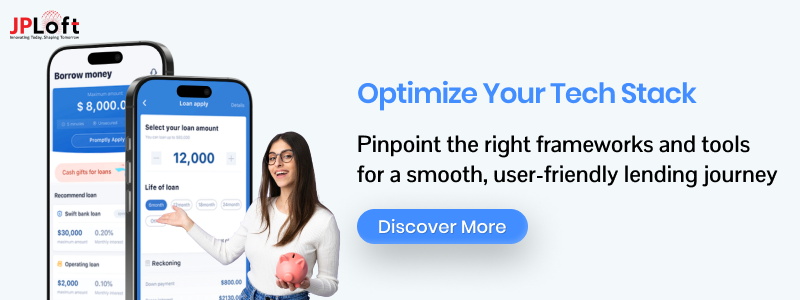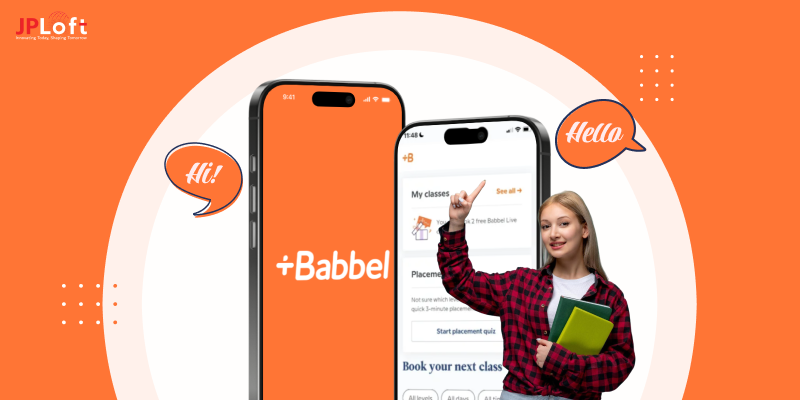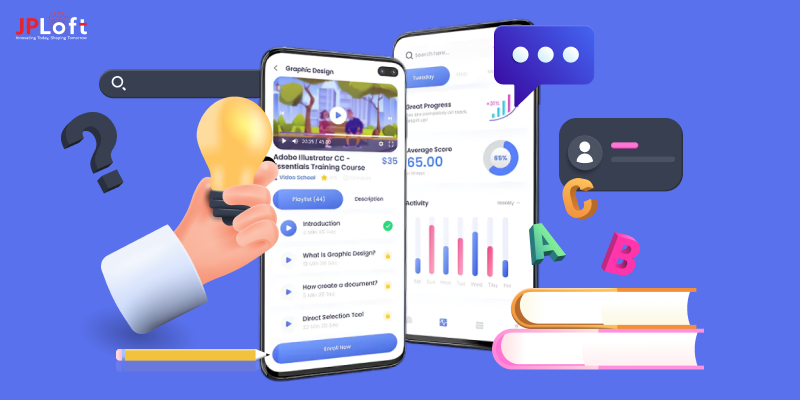Books have always been a foundation of human understanding, society, and entertainment. From old manuscripts to printed paperbacks, they have changed societies and inspired countless minds.
However, with the rise of technology, reading habits have undergone a major transformation. The physical weight of books has given way to the ease of digital forms, leading to the rise of eBooks.
Today, eBook apps have revolutionized how we read books and educational material. These apps provide unmatched benefits with features like offline reading, notes, and bookmarks for improved usefulness.
If you're curious about how to create an ebook app, this eBook app development guide will cover everything you need to know to develop an educational eBook app that meets user demands. Let’s dive in!
What Are eBook Apps ?
eBook apps are digital platforms that allow users to view, buy, and read electronic books directly on their devices, such as smartphones, tablets, and e-readers.
They serve as a portable library, giving a wide range of themes, formats, and functions to improve the reading experience.
The journey of books has been amazing. From manuscripts to the Gutenberg printing press, books have changed to meet the needs of each era. The digital change has taken this a step further, making books more available and portable than ever.
How eBooks Contribute to the Education Sector?
eBooks have revolutionized education by making learning more interactive, accessible, and cost-effective. Here’s how:
1. Easy Accessibility
-
- Students can access eBooks anytime, anywhere on their smartphones, tablets, or laptops.
- Schools and universities can create an education app to provide study materials digitally.
2. Cost-Effective Learning
-
- eBooks are more affordable than printed textbooks, reducing education app development costs.
- No printing or distribution costs make learning materials budget-friendly for students and institutions.
3. Interactive & Engaging Content
-
- Digital books can include videos, animations, and quizzes to enhance understanding.
- Features like text-to-speech and adjustable font support diverse learning needs.
4. Real-Time Updates
-
- Unlike printed books, eBooks can be updated with the latest information.
- Educational institutions offer ebooks to ensure students always have up-to-date content.
5. Collaborative & Personalized Learning
-
- Students can highlight text, take notes, and share insights with peers.
- AI-powered recommendations in eBook apps personalize learning experiences.
6. Environmentally Friendly
-
- Reduces paper usage, helping in sustainability efforts.
- Schools create eBook apps to contribute to eco-friendly learning solutions.
This makes eBooks a game-changer in modern education, offering convenience and innovation.
Market Statistics for the eBook App Market
The eBook app market has experienced significant growth in recent years, showing the growing adoption of digital reading platforms. Here are some key figures showing this trend:
-
- The Global ebooks Market size is projected to be worth around USD 29.9 Billion By 2033, from USD 18.2 Billion in 2023, growing at a CAGR of 5.1% during the assessment period from 2024 to 2033.
- In the eBooks market in the world, the number of viewers is projected to total 1.2bn users by 2029. User penetration is forecast to be 13.3% in 2024 and is likely to rise to 14.4% by 2029.
- In 2023, the Tablets and Laptops group kept a strong place in the eBooks market, having more than 55.7% of the market share, showing the choice for these devices among readers.
The above given figures speak for themselves why you should create an ebook reader app. . However, if you still have doubts, read the next section to learn the benefits of entering into the ebook industry. 
Why Should You Invest in eBook App Development?
The digital revolution has greatly transformed the way people consume information, and books are no exception.
Investing in ebook app development is a smart choice for companies and entrepreneurs looking to tap into a growing market with vast potential. Here’s why it’s worth considering:
1] Growing Popularity of eBooks
With the rise of smartphones, tablets, and e-readers, the demand for eBooks has increased. People prefer the ease of having a full library on their devices. By making an eBook app, you can cater to this trend and provide readers with an accessible, portable option.
2] A Lucrative Revenue Model
eBook apps offer various monetization possibilities. From subscriptions and pay-per-book models to in-app purchases and ads, businesses can earn a steady income. If you’re asking how to create an eBook app for profit, focusing on these models can ensure long-term financial benefits.
3] Massive User Base Potential
The audience for eBook apps spreads across age groups, professions, and regions. Whether it’s students looking for teaching materials or casual readers wanting novels, eBook app development opens doors to a broad user base, ensuring scalability and continued growth.
4] Cost-Efficiency for Businesses
Compared to actual book marketing, eBook reader apps are cost-efficient. There’s no need for printing, shipping, or product control. Instead, you can easily share material digitally.
Learning how to develop an eBook app with minimal costs can be a game-changer for businesses.
After reading these factors, you might have made up your mind to create an ebook reader app. However, with various types of eBook apps available in the market, the question is, which type suits your needs best?
Let's move onto the section to find out the suitable type for your ebook app development process.
Types of eBook Reader Apps
Each type of eBook app caters to unique user needs and preferences. If you're looking to develop an education app, choosing the right type is key to meeting market demands successfully. Here are some of the main types of ebook reader apps:
-
Standalone eBook Reader Apps: Designed solely for reading eBooks with support for multiple file formats like EPUB, PDF, and MOBI.
Examples: Aldiko, PocketBook Reader
-
Library eBook Reader Apps: Provide access to digital libraries where users can borrow eBooks for a limited time.
Examples: OverDrive/Libby, Hoopla Digital
-
Subscription-Based eBook Apps: Offer unlimited access to a vast book collection for a monthly or annual fee.
Examples: Kindle Unlimited, Scribd
-
eBook Store Apps: Function as digital bookstores where users can buy and read eBooks.
Examples: Apple Books, Kobo Books
-
Educational eBook Apps: Focus on academic content with interactive tools like quizzes and note-taking.
Examples: Chegg eReader, Coursera
-
Interactive eBook Apps: Include multimedia elements like audio, video, and animations for an engaging reading experience.
Examples: iBooks Author, Book Creator
-
Genre-Specific eBook Apps: Cater to niche readers by offering books in specific genres like romance or fantasy.
Examples: Radish Fiction, Wattpad
-
Corporate eBook Apps: Used in businesses for training, policy documents, and professional learning.
Examples: SAP Litmos, Skillsoft Books
-
On-Demand eBook Apps: Allow users to request and access specific books that may not be readily available.
Examples: Scribendi, Google Play Books
-
Audio-Integrated eBook Apps: Combine reading with audiobooks, allowing seamless switching between text and audio.
Examples: Audible, Voice Dream Reader
You are now familiar with the types of ebook apps available and it's time to know which apps are trending in the market. Let’s dive in!
Popular 10 eBook Apps
Here is the list of top ebook reader apps that are dominating the industry:
|
Ebook Apps |
Downloads |
|
Amazon Kindle |
500M+ |
|
Google Play Books |
1B+ |
|
Scribd |
50M+ |
|
Wattpad |
100M+ |
|
OverDrive/Libby |
10M+ |
|
Apple Books |
Pre-installed on iOS |
|
Kobo Books |
10M+ |
|
Aldiko |
30M+ |
|
Audible |
100M+ |
|
Bookmate |
50M+ |
These are some of the best ebook apps that are ruling the industry and their unique features are the reason behind their popularity.
Now, it's time to know what features you must add into your ebook app to make it a top player of the industry.
What are the Must-Have Features for an EBook App?
To make your eBook app stand out in today’s competitive market, incorporating important features is crucial.
This education app features increased usability, improves user involvement, and provides a seamless reading experience.
Below are the must-have features every creator should consider when planning the app:
|
Feature |
Description |
|
User-Friendly Interface |
A clean, intuitive design ensures easy navigation for users. |
|
Customizable Reading Experience |
Allows users to adjust font size, styles, brightness, and background themes. |
|
Offline Reading Mode |
Users can download books and access them offline. |
|
Cloud Storage and Syncing |
Sync reading progress, bookmarks, and notes across multiple devices. |
|
Advanced Search and Filters |
Efficient search bar with filters (e.g., genre, author, ratings) for quick book discovery. |
|
Library Management Tools |
Enables users to organize their libraries with shelves, folders, or tags. |
|
Built-in Dictionary and Translation |
Integrated tools to help users understand difficult words or phrases instantly. |
|
Social Sharing and Community Engagement |
Allows users to share excerpts, book reviews, or reading progress on social media. |
|
Text-to-Speech (TTS) Feature |
Converts text into audio for users who prefer listening or have visual impairments. |
|
Multi-Language Support |
Supports multiple languages to reach a broader audience. |
|
Secure Payment Integration |
Ensures secure transactions for subscriptions, book purchases, or in-app payments. |
|
Push Notifications |
Keeps users updated on new releases, special offers, and recommendations. |
|
Analytics and Insights |
Provides insights on reading time, completed books, and favorite genres. |
Creating an eBook app requires careful planning, execution, and a combination of user-centric features. Here’s a step-by-step plan to create an eBook app that stands out in the competitive market:
Step-by-Step Guide to Create an Ebook App
By following these steps, you can efficiently develop an ebook app that appeals to users and produces consistent revenue.
A well-thought-out method, combined with innovation and market insights, can help you build a great app in the eBook area.
Step 1: Define Your Objectives and Target Audience
Before you start to create an eBook app, define its purpose and target users.
Are you building an eBook app for general reading, education, or a specific genre? Understanding your audience helps in shaping features, UI/UX, and monetization strategies. If you plan to develop an education app, consider interactive elements like quizzes and annotations.
A clear objective will ensure a smooth development process, making it more engaging and useful for users.
|
Do’s |
Don’ts |
|
Research your target audience’s reading habits. |
Don’t develop an app without clear objectives. |
|
Identify key features based on audience needs. |
Don’t assume all users want the same features. |
|
Choose a niche (general reading, education, corporate, etc.). |
Don’t try to appeal to everyone with a generic app. |
Step 2: Conduct Market Research
Market research helps identify trends, competitors, and user expectations.
Analyze popular eBook reader apps to understand what works and what can be improved. Check reviews to find common user complaints and missing features.
If you want to build an eBook app that stands out, focus on features like offline reading, cloud sync, and personalized recommendations. A mobile app development company can also help refine your concept based on market needs.
|
Do’s |
Don’ts |
|
Study competitors and analyze their strengths and weaknesses. |
Don’t blindly copy features from competitors. |
|
Conduct surveys and user interviews for insights. |
Don’t rely only on assumptions. |
|
Identify gaps in existing eBook reader apps. |
Don’t ignore user complaints in competitor reviews. |
Step 3: Plan Features and Functionality
List essential features before you develop a mobile app.
Basic features include a user-friendly interface, multiple format support (EPUB, PDF, MOBI), bookmarking, and search options. If you’re developing an education app, add features like progress tracking, note-taking, and discussion forums.
Advanced features like AI-based recommendations and text-to-speech can enhance user experience. Planning features in advance helps in estimating the education app development costs effectively.
|
Do’s |
Don’ts |
|
Prioritize must-have features for usability. |
Don’t overload the app with unnecessary features. |
|
Include offline reading and cloud sync. |
Don’t neglect accessibility options. |
|
Ensure multi-format support (EPUB, PDF, MOBI). |
Don’t make the app dependent on a single format. |
Step 4: Design a User-Centric Interface (UI/UX)
A well-designed interface ensures ease of use and better engagement. When you make an eBook app, focus on a clean, distraction-free reading experience.
Use customizable themes, adjustable font sizes, and easy navigation. For education app design, ensure intuitive layouts with interactive elements.
A simple and appealing UI/UX makes users spend more time on your app, boosting retention and overall satisfaction.
|
Do’s |
Don’ts |
|
Design a clean and distraction-free interface. |
Don’t use cluttered layouts or excessive animations. |
|
Use readable fonts and adjustable themes. |
Don’t ignore dark mode or night reading mode. |
|
Optimize UI/UX for both mobile and tablet devices. |
Don’t ignore touch gestures like swipe for page turning. |
Step 5. Choose the Right Technology Stack
Selecting the right technology is crucial for smooth performance.
Decide whether you want to develop a mobile app for iOS, Android, or both. Popular choices include Flutter and React Native for cross-platform development.
Ensure app security measures like encryption for user data protection. If you lack technical expertise, you can hire dedicated developers to ensure the app is built using the best tools and frameworks.
|
Do’s |
Don’ts |
|
Choose the right platform (Android, iOS, or both). |
Don’t use outdated technologies. |
|
Ensure smooth performance with minimal lag. |
Don’t neglect API integrations for cloud storage. |
|
Optimize for low-power consumption. |
Don’t make the app too heavy on device storage. |
Step 6: Test Your App Thoroughly
Before launching, test your eBook reader app to identify and fix bugs. Check performance, UI responsiveness, and compatibility with different devices.
Ensure all reading modes work smoothly, and test offline functionality if included. Security testing is also important to protect user data.
Comprehensive testing ensures that users have a seamless experience when they use your app.
|
Do’s |
Don’ts |
|
Conduct usability and performance tests. |
Don’t skip security testing. |
|
Test on multiple devices and operating systems. |
Don’t launch without fixing known bugs. |
|
Simulate real-world user scenarios. |
Don’t neglect offline reading tests. |
Step 7: Launch the App
Once testing is complete, launch your app on app stores.
Optimize your listing with relevant keywords, screenshots, and a compelling description. Highlight unique features like AI-powered recommendations or cloud sync.
Consider offering a free trial or discount to attract early users. A strong launch strategy increases visibility and helps gain initial traction for your eBook app.
|
Do’s |
Don’ts |
|
Create an engaging app store listing. |
Don’t ignore ASO (App Store Optimization). |
|
Use high-quality screenshots and videos. |
Don’t launch without a marketing plan. |
|
Offer promotional discounts for first users. |
Don’t underestimate user onboarding. |
Step 8: Gather User Feedback and Update Regularly
After launching, collect user feedback to improve your app.
Track reviews, ratings, and analytics to understand user behavior. Address bugs and introduce new features based on user requests. Regular updates enhance user experience and keep your app relevant.
Also, monitor the cost to create a mobile app for future upgrades to avoid budget overruns. Continuous improvements ensure your eBook app remains competitive in the market.
|
Do’s |
Don’ts |
|
Monitor user feedback and ratings. |
Don’t ignore complaints. |
|
Regularly update the app with new features. |
Don’t leave the app without updates. |
|
Improve security and performance over time. |
Don’t add unnecessary features. |
This complete guide to ebook app development will help you build a robust and feature-rich app. However, the development requires a considerable amount of investment.
Let’s see in the next section how much it costs to create an on-demand ebook app:
How Much Does It Cost To Create An Ebook App
Developing an eBook app involves various stages, each contributing to the overall education app development cost. On average, the total cost to create an eBook app ranges from $25,000 to $100,000.
This estimation depends on factors such as app complexity, features, design, and development team location.
Below is a detailed cost breakdown in tabular form for a better understanding.
|
Development Phase |
Estimated Cost (USD) |
|
Planning and Research |
$2,000 - $8,000 |
|
UI/UX Design |
$4,000 - $12,000 |
|
Front-End Development |
$6,000 - $20,000 |
|
Back-End Development |
$8,000 - $30,000 |
|
Core Features Implementation |
$5,000 - $20,000 |
|
Advanced Features |
$5,000 - $20,000 |
|
Quality Assurance and Testing |
$4,000 - $10,000 |
|
Deployment |
$2,000 - $5,000 |
|
Post-Launch Support |
$3,000 - $10,000 annually |
By understanding these components, you can better plan your budget and ensure your development journey stays on track. Now you know about the expense and it's time to know how to monetize your ebook app.
How Can You Earn Money from eBook Apps?
eBook apps have a lot of different educational business models that can help users have a better experience while also making money. Here are some ways to make money by making eBook apps:
A] Plans for Subscription
Allow users to access a library of eBooks by subscribing to a service and paying a fee every month or yearly. It's possible to make different plans with different benefits, like the ability to read offline or access special material. With this method, you can count on a steady flow of income.
B] Pay-Per-Book
Allow users to purchase individual eBooks directly within the app. This model is ideal for readers who prefer to own specific titles without subscribing. You earn revenue each time a book is purchased.
C] Freemium Model
Provide basic features for free and charge for premium features like ad-free reading, advanced annotations, or early access to new releases. This is an effective way to attract users and upsell them later.
D] In-App Advertisements
Display ads from publishers or advertisers within your app. Use targeted ads to maintain relevance and avoid disrupting the user experience. Partnering with ad networks like Google AdMob can help optimize earnings.
E] Affiliate Marketing
Promote books, reading accessories, or related products within your app through affiliate links. You earn a commission for every purchase made via your app.
F] Corporate Partnerships
Collaborate with schools, universities, or businesses to offer eBooks or educational materials through your app. This model can generate significant revenue, especially if you provide custom solutions for organizations.
G] eBook Publishing Marketplace
Build a marketplace where authors can sell their books. Charge a commission for every sale, providing a platform for independent writers while earning revenue for your app.
H] Sponsorship Deals
Partner with publishers or brands to sponsor content or specific app sections. For instance, a publisher could sponsor a “Featured Author” section for a fee.
I] White Label Solutions
License your eBook app framework to other businesses or institutions under a white-label arrangement. This allows others to use your app’s technology while you earn licensing fees.
Develop an Amazing eBook App with JPLoft
We at JPLoft are experts at making your eBook app ideas come to life. Our education app development company makes eBook apps that are cutting-edge, easy to use, and full of features that are specific to your business needs.
We have years of experience making apps. If you want to build an eBook app for users, publishers, or educational institutions, our team of experts ensures a seamless app experience.
Ready to step into the growing world of eBook app development? Partner with JPLoft to make an app that stands out in the market and draws a global audience. Let’s build something amazing together!
The Bottom Line
The demand for eBook apps is rising quickly, driven by the shift to digital platforms and the convenience they offer to readers worldwide. Whether you want to build an education app for personal use, educational reasons, or business projects, knowing the development process is crucial.
By focusing on must-have features, picking the right tech stack, and having a good monetization strategy, you can make your app a success in the competitive market.
FAQs
An eBook app is a digital platform that allows users to access, read, and store electronic books on their devices. These apps typically offer features like bookmarking, note-taking, and font adjustments for a personalized reading experience.
The cost to develop an eBook app varies based on features, platform (iOS, Android, or both), design complexity, and development team location. Generally, it ranges between $25,000 and $100,000.
Essential features include a user-friendly interface, customizable reading modes, offline access, a search function, integration with cloud storage, and support for multiple file formats like PDF and ePub.
eBook apps can be monetized through subscription models, in-app purchases, advertisements, pay-per-download options, and premium content subscriptions.
Future trends include AI-based personalization, audiobook integration, multilingual support, AR/VR features for immersive reading, and blockchain for secure content distribution.














Share this blog